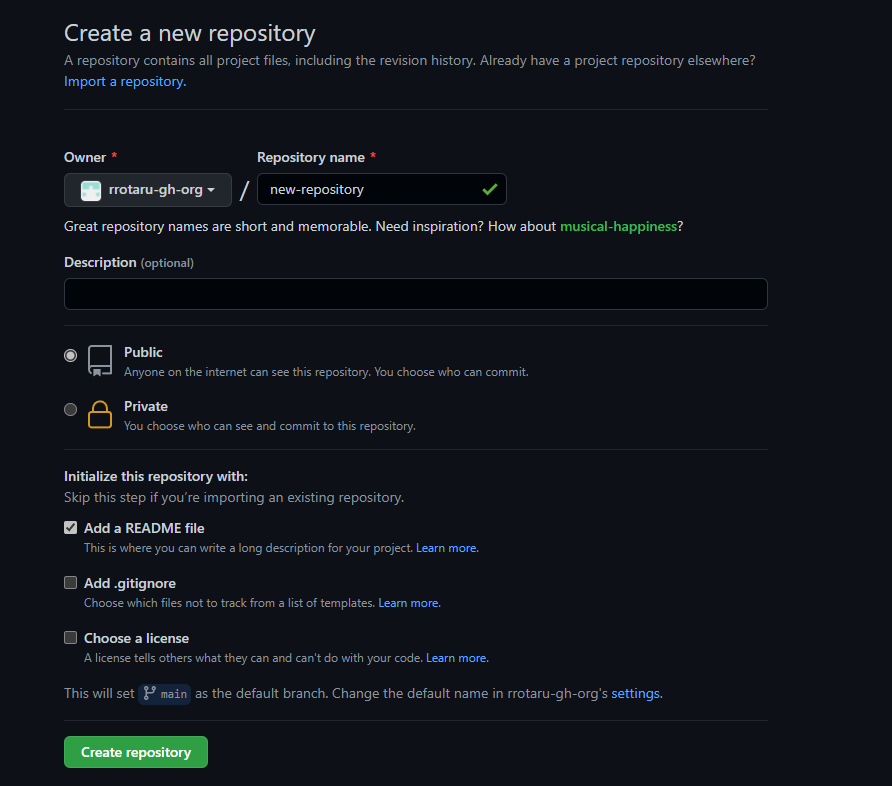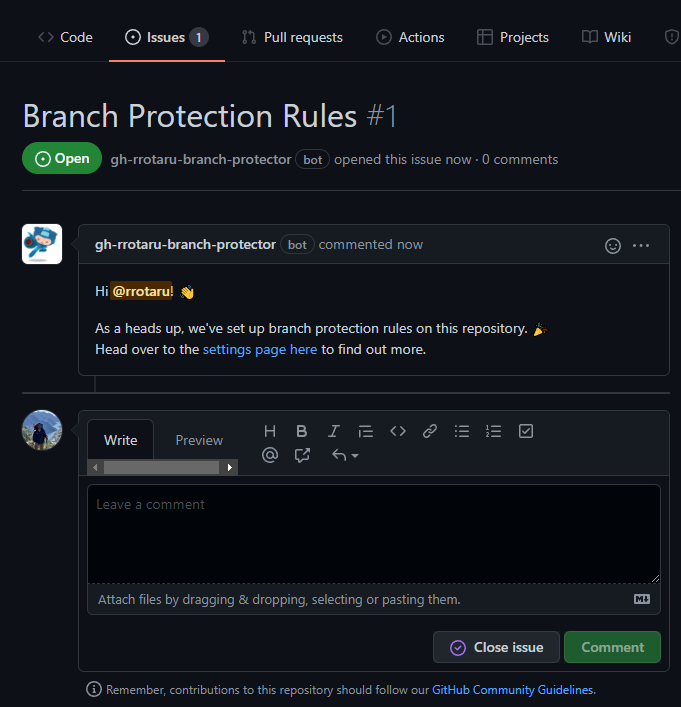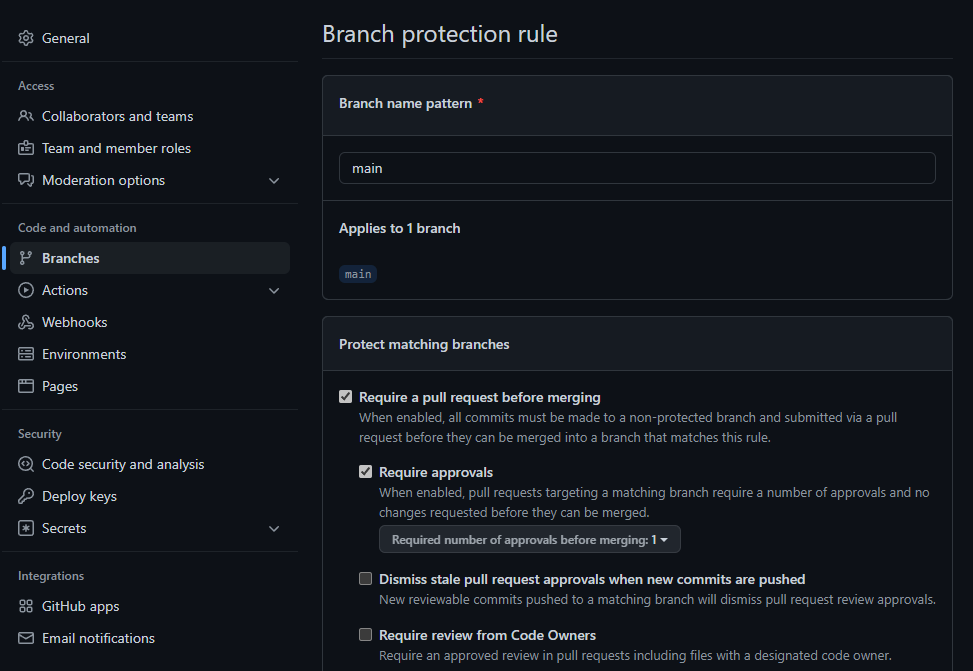A GitHub app for automatically setting up branch protection rules on new repositories
Every time a new repository is created in your organization, Branch Protector will update the repository's settings to enable a branch protection rule. This rule will require developers to create a pull request and receive at least one approval before merging code changes into the default branch.
You can follow the detailed documentation for Creating a GitHub App. Below is the condensed version of the documentation
-
On your GitHub instance, visit the
settingspage on the Organization that you want to own the GitHub App, and navigate to theGitHub Appssection.- You can access this page by visiting the following url:
https://<MY_GITHUB_HOSTNAME>/organizations/<MY_ORG_NAME>/settings/apps
- You can access this page by visiting the following url:
-
Create a new GitHub App with the following settings:
- Webhook URL: URL of the machine on which this app has been deployed (Example:
http://ip.of.machine:3000) - Homepage URL: URL of the machine on which this app has been deployed (Example:
http://ip.of.machine:3000) - Webhook Secret: REQUIRED The webhook secret that will be or has been defined as an environment variable in your deployment environment as
WEBHOOK_SECRET - Permissions:
- Administration: Read & Write
- Issues: Read & Write
- Events:
- Events: Read only
- Subscribe to Events
- Repository
- Branch protection rule
- Webhook URL: URL of the machine on which this app has been deployed (Example:
-
Once these have been configured, select the
Create GitHub Appbutton at the bottom of the page to continue -
Make a note of the
APP IDon your newly-created GitHub App. You will need to set this as an environment variable when you configure the app. -
Generate and download a private key from the new App page, and store it in your deployment environment. You can either do this by saving the contents of the key file as the environment variable
PRIVATE_KEY, or by saving the file directly in the environment and specifying its path with the environment variablePRIVATE_KEY_PATH -
After you have created the GitHub App, you will need to install it to the desired GitHub Organizations.
- Select
Install App - Select
All Repositoriesor the desired repositories you wish to watch
- Select
Branch Protector is based on the Probot framework and can be deployed as a standard NodeJS application. Ensure that NPM is installed in your deployment environment. Also ensure that the following environment variables are configured.
# Clone repository to local machine
git clone https://github.com/rrotaru/branch-protector
# Change directories into code base
cd branch-protector
# Install all dependencies
npm install
# Create the .env configuration file and update with all needed variables
cp .env.example .env
vi .env
# update .env with configuration variables
# Run the bot
npm start
# Run the bot in the background and output to log
# there are other major ways to achieve this...
# https://github.com/unitech/pm2
# https://github.com/github/auto-fork-sync#running-with-systemd
# https://www.npmjs.com/package/forever
nohup npm start 2>&1 >> /path/to/output.log &APP_ID- The App ID of the GitHub AppBOT_NAME- The name of the botWEBHOOK_SECRET- The secret to prevent man in the middle attacksGHE_HOST- This is a required field for GitHub Enterprise Server implementations (Example: github.mycompany.com)
One of the following is required:
PRIVATE_KEY- The contents of the private key for your GitHub App. If you're unable to use multi-line environment variables, use base64 encoding to convert the key to a single line string.PRIVATE_KEY_PATH- The path to the .pem file for your GitHub App. (Example:PRIVATE_KEY_PATH='path/to/key.pem')
Once you have the GitHub App up and running, users will simply need to create new repositories in the GitHub Organization and Branch Protector will take care of the rest.
If you find any bugs or would like to contribute to more features, please check out our issues page and CONTRIBUTING guide for more details.
- Probot Framework: https://github.com/probot/probot
- Probot Settings app: https://github.com/probot/settings
- Rally + GitHub integration: https://github.com/github/rally
This project uses the MIT License


